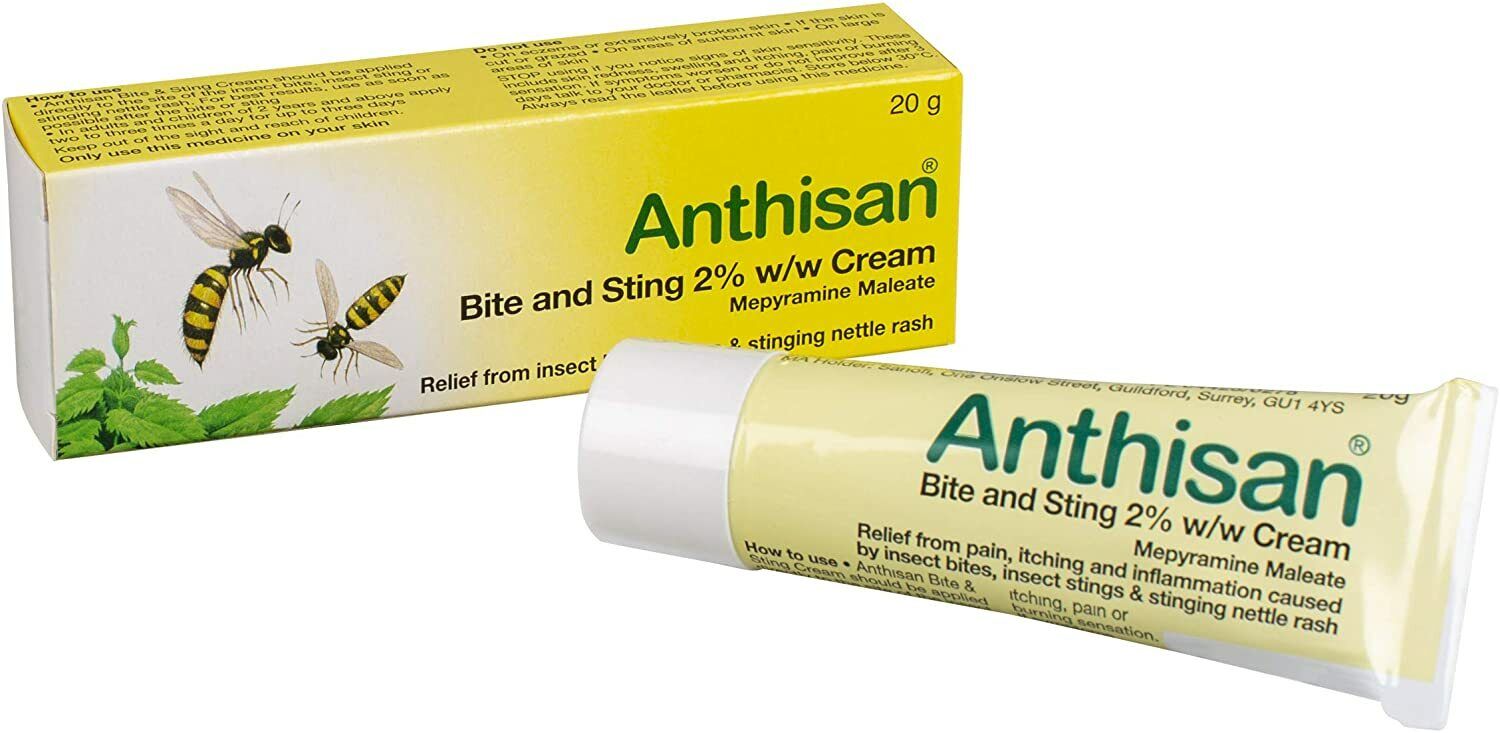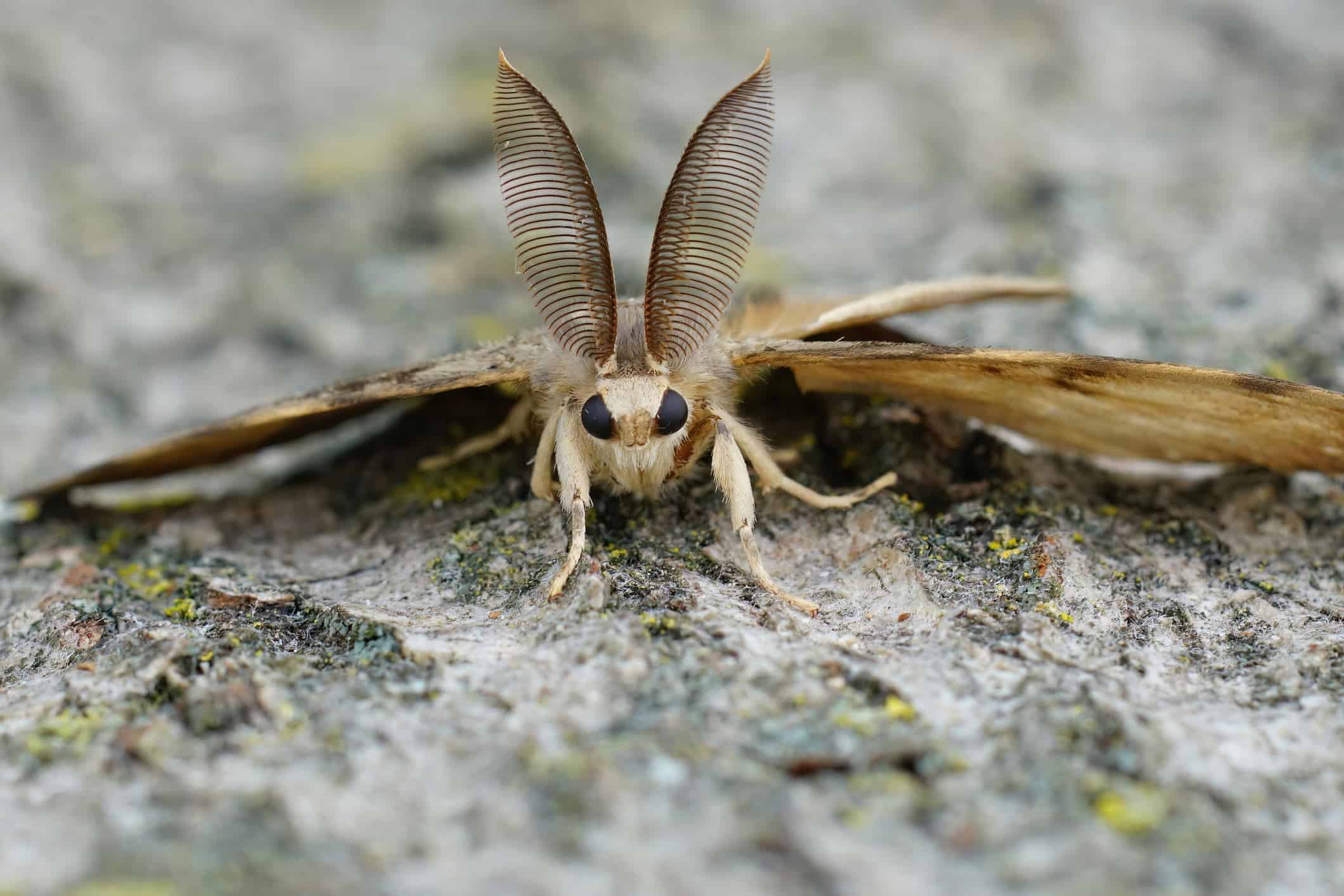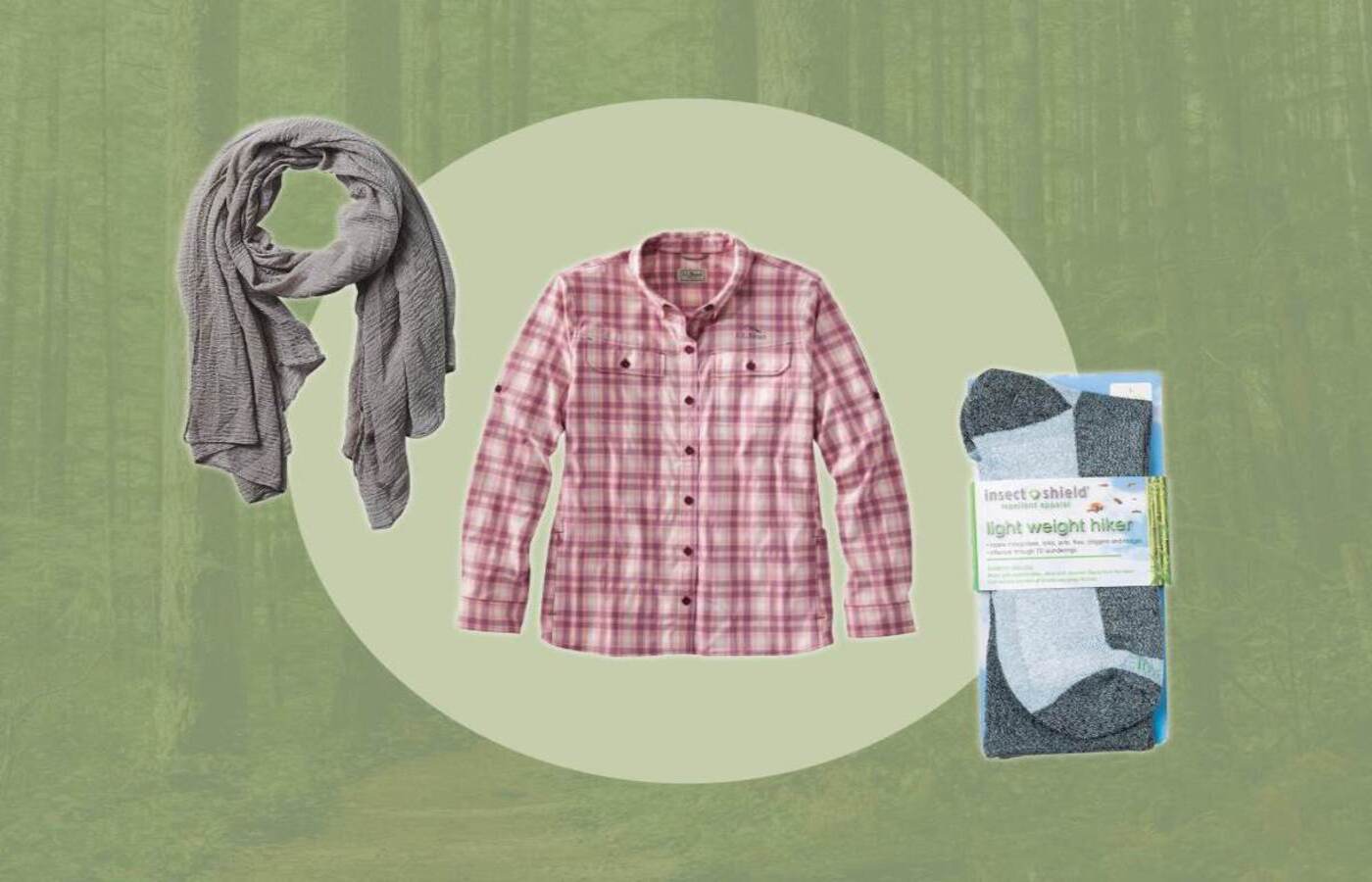Home>Gardening Tips and Tricks>Problem Solving>What Insects Bite Through Clothes


Problem Solving
What Insects Bite Through Clothes
Modified: January 22, 2024
"Discover effective problem-solving techniques to protect your clothes from pesky insects that have a knack for biting through fabric."
(Many of the links in this article redirect to a specific reviewed product. Your purchase of these products through affiliate links helps to generate commission for Chicagolandgardening.com, at no extra cost. Learn more)
Table of Contents
Introduction
When it comes to outdoor activities or working in certain environments, protecting ourselves from insect bites is crucial. While most of us are familiar with the irritating bites of mosquitoes and ticks, there are other insects that can also bite through clothes, causing discomfort and potential health risks.
Insects have evolved various ways to extract blood or nutrients from their hosts, and some have adapted to biting through clothing as a means of accessing their desired food source. The ability of these insects to penetrate our clothing can be a nuisance, leaving us vulnerable to painful bites and potential infections.
This article aims to explore the common insects that have the capability to bite through clothes, understand their characteristics, highlight the impact of their bites, and provide useful tips on how to prevent and protect ourselves.
So, whether you are planning a camping trip, working in outdoor environments, or simply want to be informed about potential insect encounters, read on to learn more about these pesky creatures and how to safeguard against their bites.
Common Insects that Bite through Clothes
While mosquitoes and ticks are commonly known for their biting tendencies, there are other insects that have developed the ability to bite through clothing. Understanding these insects is essential in order to take preventative measures and protect ourselves.
One of the most notorious insects that can bite through clothing is the black fly. These small, dark-colored flies are found in many regions around the world and are infamous for their painful bites. Black flies have strong mouthparts that allow them to pierce through fabric and access the skin beneath, where they feed on blood.
Another insect to be aware of is the horsefly. These large flies are known for their painful bites and can easily bite through thin or loose-fitting clothing. Their sharp mouthparts can cut into the skin, causing irritation and discomfort.
Additionally, certain species of ants have been observed to bite through clothing. Fire ants, for example, are aggressive insects that can deliver painful stings. While they may not be able to bite through thick clothing, they can certainly infiltrate light fabrics and cause discomfort.
It’s worth noting that some spiders can also bite through clothes, although this is less common. Spiders like the black widow and brown recluse have venomous bites that can lead to serious health issues. While they typically prefer exposed skin, it’s important to be cautious and take measures to protect yourself, even through clothing.
Lastly, it’s essential to be mindful of bed bugs. Although they are not able to bite through clothing as easily, they can hide and lurk in bedding or upholstered furniture, making it necessary to take precautions to prevent infestations.
Knowing the common insects that can bite through clothes is the first step in protecting ourselves. By understanding their characteristics, we can better prepare and take preventive measures to avoid their painful bites.
Characteristics of Insects that Bite through Clothes
Insects that have the ability to bite through clothes have specific characteristics that allow them to penetrate fabric and access our skin. Understanding these characteristics can help us identify these insects and take appropriate measures to protect ourselves.
One common characteristic of insects that bite through clothes is their strong mouthparts. These mouthparts are designed for piercing and sucking, allowing them to break through clothing fibers and reach the skin beneath. Whether it’s the sharp mouthparts of black flies or the cutting mandibles of horseflies, these insects have evolved to overcome the barrier of clothing.
Another characteristic is their persistence. Insects that bite through clothes are often relentless in their pursuit of a blood meal. They do not easily give up when faced with a clothing barrier. Some of these insects can continue to probe and bite until they find a way to access exposed skin or find a weak spot in the fabric.
These insects also have the ability to detect body heat and carbon dioxide. This means that they can sense the presence of a potential host even through clothing. They are attracted to the warmth and chemical signals emitted by our bodies, which leads them to target areas where the clothing may be thinner or more exposed, such as the neck, ankles, or wrists.
In addition, some of these insects have specially adapted mouthparts, such as the serrated jaws of certain ants. These jagged structures allow them to grip onto fabric and exert pressure to create an opening to access the skin below.
It’s important to note that not all insects have the same ability to bite through clothes. While some insects have developed specific adaptations to overcome clothing barriers, others may simply bite exposed skin or target areas where clothing is thin or tight-fitting.
By understanding the characteristics of insects that bite through clothes, we can better anticipate their behavior and take appropriate precautions. From choosing the right clothing materials to using protective measures, being aware of these characteristics can help us minimize the risk of painful insect bites.
Impact of Insects Biting through Clothes
The impact of insects biting through clothes can range from mild irritation to more severe health concerns. Understanding these impacts can help us take the necessary steps to protect ourselves and mitigate any potential risks.
One immediate impact of insect bites through clothing is the discomfort and pain they can cause. Bites from insects like black flies, horseflies, and certain ants can be particularly painful due to their strong mouthparts and venomous bites. The bites may result in redness, swelling, itching, and a stinging sensation, which can significantly impact our comfort and well-being.
In addition to physical discomfort, there is also the risk of allergic reactions. Some individuals may have allergies or sensitivities to insect bites, resulting in more intense reactions. These can include severe swelling, hives, difficulty breathing, and even anaphylaxis in rare cases. It’s important to be aware of any personal allergies or sensitivities to insect bites and seek medical attention if necessary.
Beyond the immediate impact, insect bites can also lead to secondary infections. When an insect bites through clothing and breaks the skin, bacteria or other pathogens from the insect’s mouthparts can enter the wound. This can result in infections such as cellulitis or impetigo, which may require medical intervention and can lead to further complications if left untreated.
Moreover, certain insects, such as ticks and mosquitoes, can transmit diseases through their bites. Lyme disease, West Nile virus, dengue fever, and Zika virus are just a few examples of the potentially serious illnesses that can be transmitted by these insects. While ticks typically prefer to bite exposed skin, they can still latch onto clothing and later find their way to bare skin.
Finally, the psychological impact of insect bites through clothes should not be underestimated. Constantly worrying about being bitten can cause anxiety and restrict our enjoyment of outdoor activities. It’s essential to feel safe and protected in our surroundings, and avoiding insect bites is a key aspect of that.
Considering the impacts of insect bites through clothes, it’s clear that taking preventive measures to protect ourselves is crucial. By understanding the risks and being proactive in our approach, we can minimize the discomfort, health risks, and psychological toll associated with these pesky insects.
Prevention and Protection against Insect Bites through Clothes
Protecting ourselves from insect bites through clothes is essential for our comfort, safety, and overall well-being. By implementing preventive measures and using appropriate protective gear, we can greatly reduce the risk of being bitten. Here are some effective strategies to consider:
Choose the right clothing: Opt for lightweight, loose-fitting clothing that covers as much of your skin as possible. Long sleeves, long pants, and socks can create a physical barrier against insect bites. Additionally, consider wearing clothing treated with insect repellents or incorporating natural repellent fabrics like permethrin-treated clothing.
Use insect repellents: Apply an EPA-approved insect repellent to exposed skin and clothing. Look for ingredients like DEET, picaridin, or oil of lemon eucalyptus. Follow the instructions on the label and reapply as needed. Be cautious when applying repellents on young children and follow age-specific guidelines.
Avoid peak biting times: Many insects are most active during dawn and dusk, so try to limit outdoor activities during these times. If you need to be outside, take extra precautions by wearing protective clothing and using insect repellents.
Inspect and treat clothing and gear: Before venturing outdoors, inspect your clothing, gear, and footwear for any insects or eggs. Shake out and brush off any unwelcome hitchhikers. Treat your gear with insect repellents or permethrin to create an extra layer of protection.
Secure openings and seams: Make sure that your clothing has a tight weave and secure closures (such as elastic cuffs or drawstrings) to prevent insects from finding their way in. Tuck pants into socks, use gaiters, and wear closed-toe shoes to minimize access points.
Maintain a clean environment: Insects are attracted to odors, so keeping your surroundings clean and free of food waste or strong fragrances can help deter them. Use appropriate trash bins, clean up spills, and avoid wearing heavily scented cosmetics or perfumes when spending time outdoors.
Check for ticks: After spending time in potentially tick-infested areas, carefully check your clothing, hair, and body for ticks. Promptly remove any ticks you find using tweezers or a tick removal tool. Be sure to follow proper tick removal techniques to reduce the risk of disease transmission.
Seek medical attention when needed: If you experience severe reactions to insect bites or suspect an infection, it is important to seek medical attention promptly. Allergic reactions and infections require appropriate medical treatment to prevent complications.
By following these preventive measures and protecting yourself against insect bites through clothing, you can enjoy outdoor activities with greater peace of mind. Stay vigilant, be proactive, and prioritize your well-being to minimize the risk of encountering these pesky insects.
Conclusion
Protecting ourselves from insect bites through clothing is essential for our comfort, health, and overall well-being. While insects that can bite through clothes may seem like a formidable challenge, there are effective prevention and protection strategies we can implement.
By understanding the characteristics of these insects and being aware of the potential impacts of their bites, we can take the necessary steps to safeguard ourselves. Choosing the right clothing, using insect repellents, and avoiding peak biting times are all key factors in preventing bites through clothes.
Inspecting and treating our clothing and gear, securing openings and seams, and maintaining a clean environment are additional measures we can take to discourage insects from accessing our skin. Regularly checking for ticks and seeking medical attention when needed are crucial steps in minimizing the risks associated with these invisible pests.
It is important to remember that no preventive measure is foolproof, and some persistent insects may still find a way to bite through clothing. However, by implementing multiple protective measures in combination, we can greatly reduce the likelihood of being bitten and minimize any resulting discomfort or health concerns.
So, whether you’re planning a camping trip, exploring the great outdoors, or simply want to be prepared for potential encounters, use the knowledge and strategies outlined in this article to protect yourself from insects that can bite through clothes.
By staying informed and taking proactive steps, we can enjoy outdoor activities with greater peace of mind, knowing that we are well-prepared to defend against those pesky insects.








